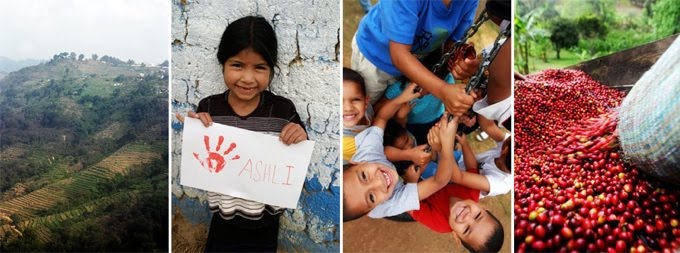There are three major ways this is done
- washed or water processed
- dry or natural processed
- honey, pulped natural, or semi-washed processed
This week we will be exploring what a coffee goes through when it is "washed". I have created this graphic to help you see what goes on with the coffee "bean".
- First the coffee is picked off the tree. The fruit you see is ripe. The fruit of an unripe cherry will be green, not red. How this is done is a story for another day.
- The main difference between wet and dry processed coffee is how the fruit is removed from the coffee bean, which is the seed inside the fruit. A washed coffee will have had it's fruit removed either by a ferment and wash method or by a machine assisted method.
-Ferment and Wash removes the fruit by first immersing the cherries in water. This causes the good coffee to sink, while the bad coffee floats. The good coffee is then pushed through a screen which removes a good portion of the outer fruit. The coffee then either sits in water or it's own juices causing the remaining fruit to loosen up over the next 2 or three days. This fruit is then washed off by putting the coffee in water tanks.
-Machine Assisted is similar to Ferment and Wash but instead of letting the coffee sit for two or three days while the fruit loosens up. Instead the coffee is placed in a mechanical scrubber which scrubs off the remaining fruit. This process is more reliable then Ferment and Wash, however the fermentation process adds flavors to the coffee that many roasters would like to keep intact. - After the fruit is removed the coffee needs to be dried. It is dried by using a machine, or by spreading the coffee out on large patios to dry in the sun (if it is placed on patios the drying is often finished by machine). This brings the coffee down to a moisture content of 10% which makes the bean stable.
- The drying process not only makes the bean stable it also drys up a coating on the outside of the bean called parchment. This makes it easy to remove this outer layer. The parchment is generally removed by a machine, this process is called hulling. After the hulling is complete some folks have an additional step called polishing where the bean is rubbed to improve the way the bean looks and to decrease the about of chaff that comes off in the roasting process. However polishing is looked down on by many people since the process heats up the bean which can be detrimental to the overall flavor of the coffee.
Now the coffee has been processed! It now just needs to be cleaned, sorted and go through grading. Which we will talk about at a later time. Do you know which CA coffees are washed? If you guessed our Guatemalla and our Honduras you're right!






